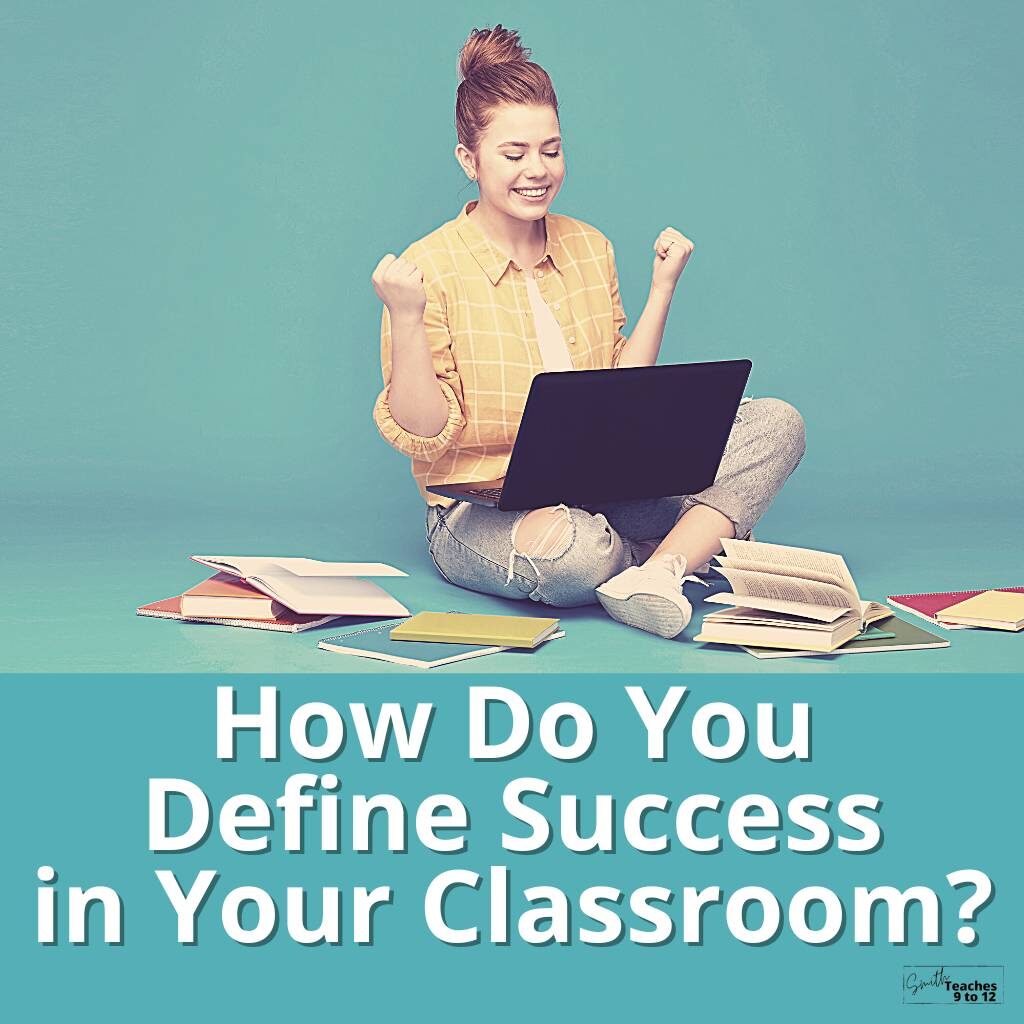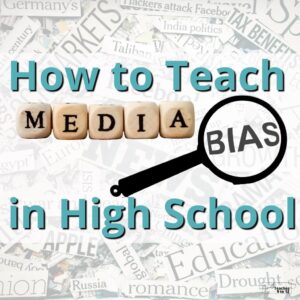Sharing is caring!
Over the last two years I think many of us have reflected a bit more on what is important in our lives and what we want to prioritize. This same shift has happened with our students but they may not have had the chance to process and to reflect on these big shifts. Here’s where a lesson focused on definitions of success can be a wonderful addition to your ELA classroom. So the question to guide the lesson is how to define success?
This lesson outlined below incorporates discussion, media analysis, and a reflection component. It can be completed in a single class and adapted to suit the students in your room or you might do it as a series of lessons over the course of the school year. There’s even an option to extend the lesson with nonfiction using different podcast episodes focusing on different famous people.
Step 1: What is Success?
A few weeks into the school year put a question up on the white board for students: What is success?
And ask students to define it. On sticky notes they share (anonymously) and then add their sticky notes to the white board at the front of the room.
Read out some of the contributions and start a discussion. What do they notice in the responses? Are they surprised by the definitions? Is there anyone who wants to share their definition and rationale?
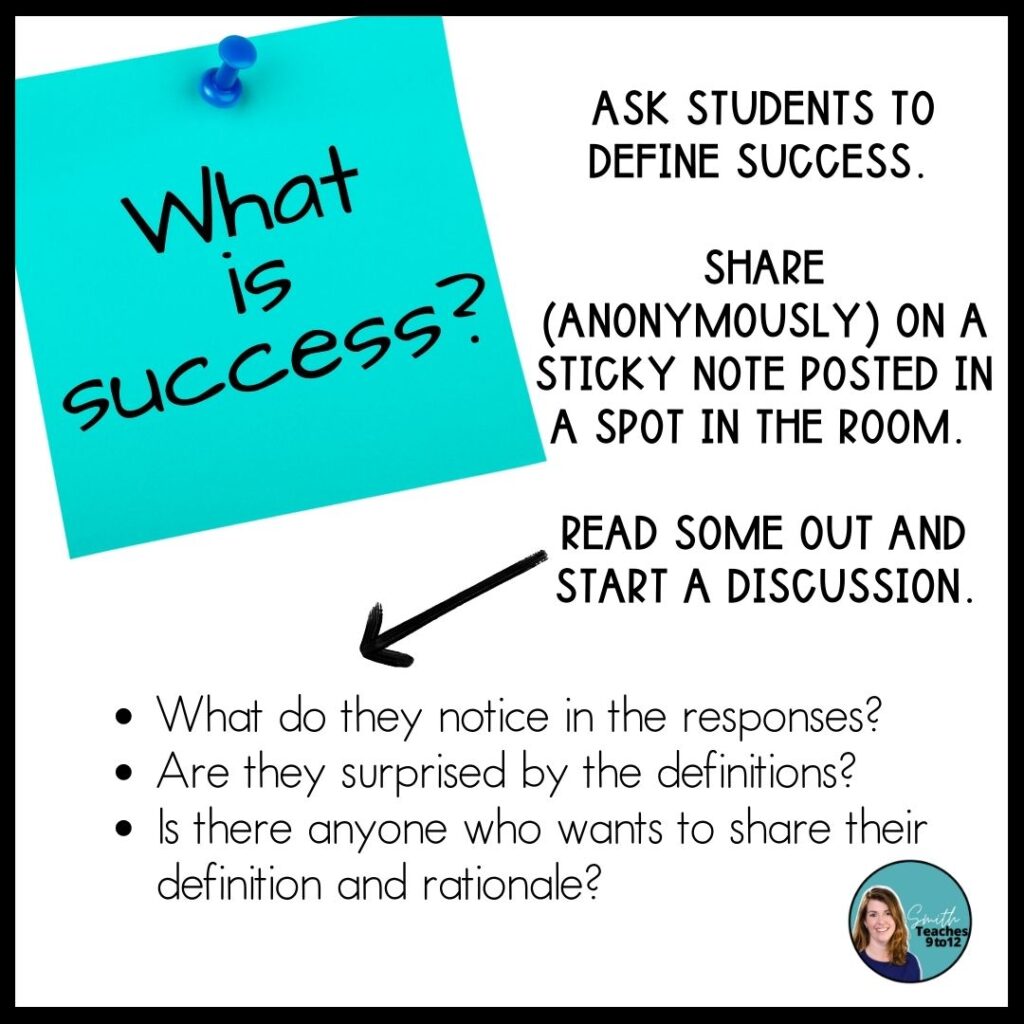
Step 2: Explore ideas of success
After a short discussion, introduce students to a variety of visual media that explores success in different forms and ways.
I like to use images from Liz and Mollie on IG like this one about the combination of success and failure or this one about comparison or even this one about different ways to measure success. There are so many to choose from with this account to examine mental health, goal setting, and success. Another option is this one from Sylvia Duckworth about the reality and illusions of success using an iceberg image. A final option is one you might have seen a few times:
Ask students to take a look at the images and explore their meanings.
There are a few ways this can be done:
- Gallery walk – Display the images on big paper around the classroom. Students can wander and then stop and comment on any image(s).
- Gallery walk – Display just the images and have students wander to review the images. After 2 minutes have them choose one image to do a short reflection on their own piece of paper, back at their desk.
- Copies in small groups – Share a group of images with students in small groups to either discuss with each other out loud their thoughts on the messages in the images or have students complete a silent discussion by writing on big paper and building on each other’s ideas. A silent discussion often allows the quieter students in your class to also participate!
TEACHER TIP: If completing this option, to increase accountability for contributions, have students write in different markers. That way as you move around the room you can easily see the level of engagement and participation for each student within the group with a quick glance at what color is dominant in the discussion.
- Digital display – Provide students with a slideshow with different options and they can write a response on a separate slide or doc.
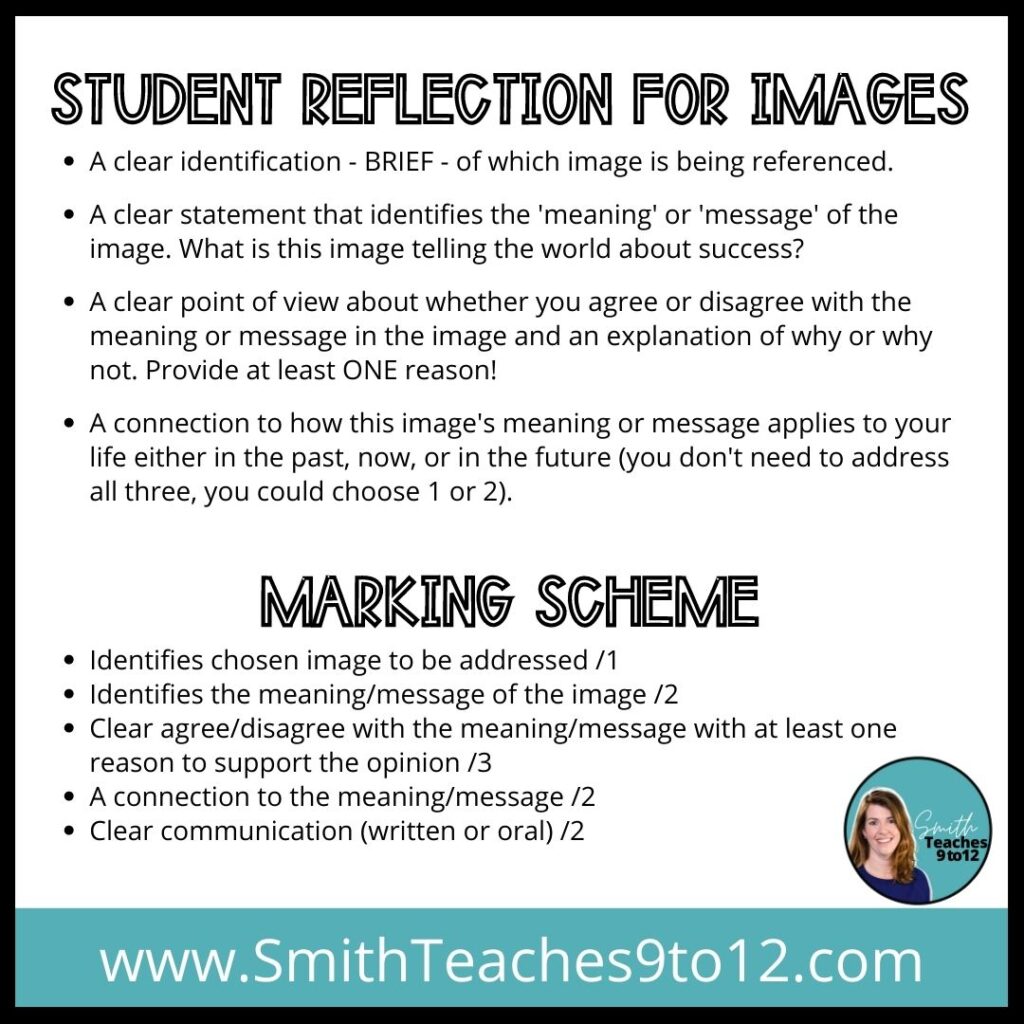
To incorporate a written component students could complete a response (150-200 words or a 2 minutes verbal response – I love using Loom for these).
To guide responses ask students to make sure their response has:
- A clear identification – BRIEF – of which image is being referenced.
- A clear statement that identifies the ‘meaning’ or ‘message’ of the image. What is this image telling the world about success?
- A clear point of view about whether you agree or disagree with the meaning or message in the image and an explanation of why or why not. Provide at least ONE reason!
- A connection to how this image’s meaning or message applies to your life either in the past, now, or in the future (you don’t need to address all three, you could choose 1 or 2).
If you’re looking to mark this response. Here’s a marking scheme that has worked well for me with this task:
Marking scheme
Identifies chosen image to be addressed /1
Identifies the meaning/message of the image /2
Clear agree/disagree with the meaning/message with at least one reason to support the opinion /3
A connection to the meaning/message /2
Clear communication (written or oral) /2
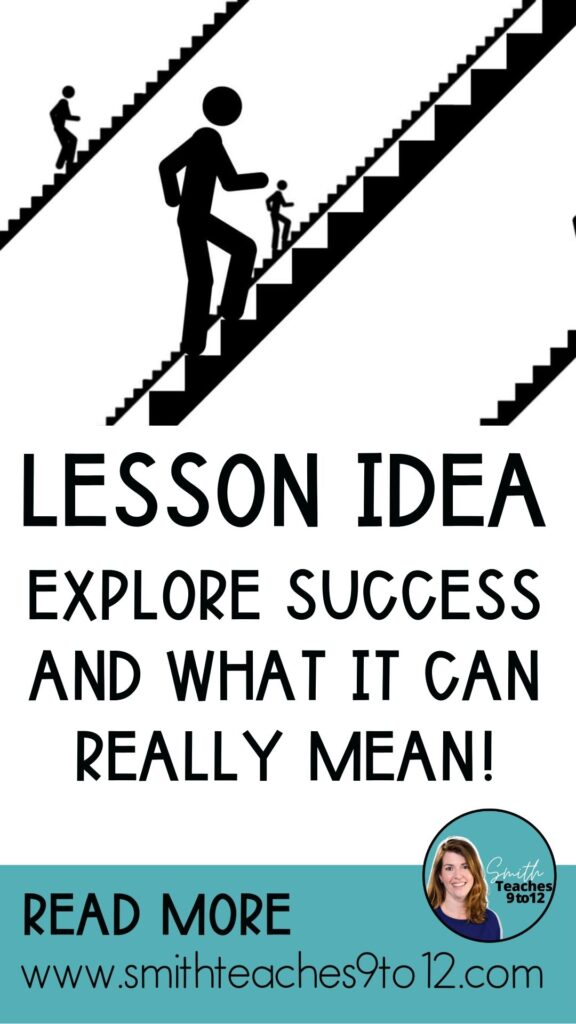
Step 3: Personal Reflection
To shift from the outside points of view and variations of success, have students return to their own experiences. Use these 4 key reflection questions to get them thinking and (re)defining success for themselves.
- When have you been successful in your life? Think about big and small moments in your life so far.
- Describe a moment when you failed. Think about big and small moments in your life so far. How did you feel before/during/after? How did you feel about the situation in general?
- What did you learn in each moment of success and failure? Did you learn more from the moment of success or the moment of failure? Why do you think that is?
- How might you redefine success for yourself? What does that look like right now for you?
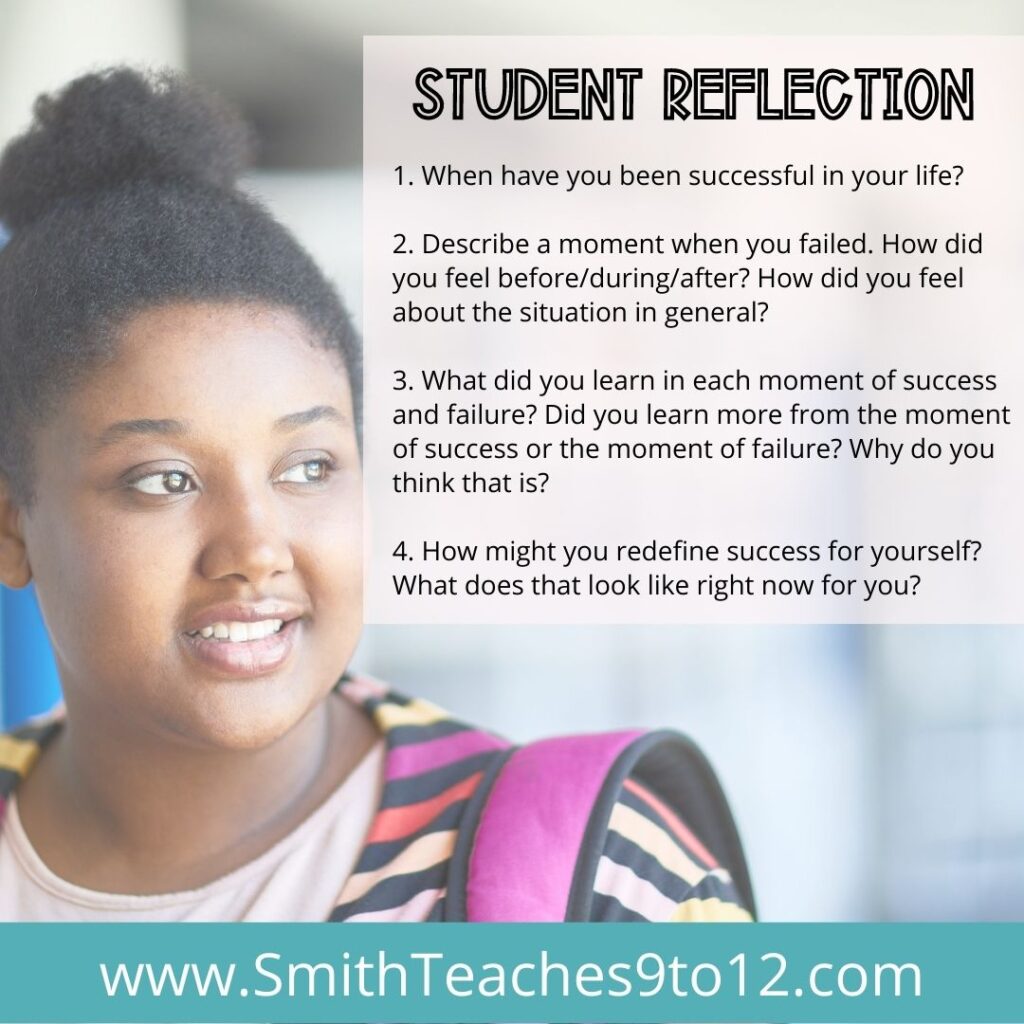
Extending The Lesson
The lesson could end here or you could extend it and tie it to more specific curriculum requirements by having students listen and respond to a podcast that features different stories of success. This could be an immediate follow-up or another lesson further into the school year as a way to continue the discussion of success.
How I Built This with Guy Raz has tons of episodes about entrepreneurs who are successful but in a multitude of ways and on different paths.
We Regret to Inform You: The Rejection Podcast profiles famous figures from sports, business, television, film, and music. It tracks their rejection and ultimately their success in their chosen field.

Take a look at this previous post all about Career Exploration and Podcasts with activities to complete for suggested episodes.
Another option is to have students define options for their success this school year by establishing SMART goals. Students can review the concept of a SMART goal, which is a goal that is specific, measurable, achievable, relevant, and time-bound. And then establish a SMART goal for your class, school in general, or even life beyond school.
You could use this ready-made lesson to introduce and to revisit SMART goals in your classroom throughout the school year. This lesson walks students through the process of making a SMART goal by having them assess other goals to see if they fit the criteria. With that knowledge students write their own goals, and using the time-bound option they can make their goal SMARTER so they can evaluate and reward themselves for their success.

Related articles:
- Infusing Career Career Exploration for High School into ELA
- Career Exploration and Podcasts
- 3 Steps to Measure Growth in Students’ Skills

